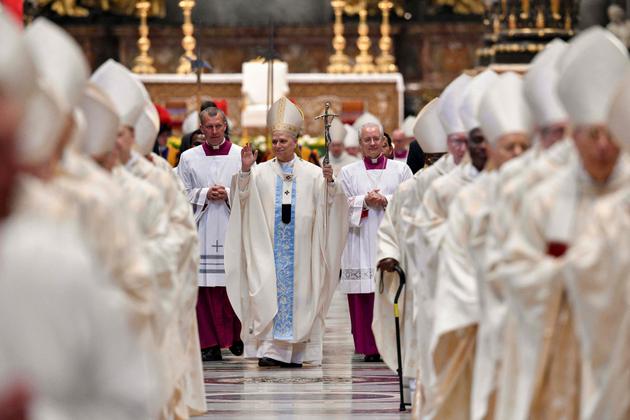The fourth mass of the morning ended at 11 am on Sunday, May 25, in the packed cathedral, yet the fervor of the faithful did not wane. A line formed in front of the confessional. Believers whispered prayers to Christ on the cross, to the right of the entrance, or to the Virgin Mary, to the left. In Chiclayo, a city in northern Peru where Pope Leo XIV served as bishop for eight years from late 2014 to early 2023, Catholic faith is lived in devotion and, every day of the week, the churches fill with men and women, young and old. In Saint-Mary Cathedral, eight masses are celebrated on Sundays and five on other days.
Outside, on the steps leading down to the Plaza de Armas, the pride of being the diocese of Bishop Prevost – the community to which, upon becoming pope, he paid tribute from the loggia of Saint Peter’s Basilica in Rome on May 8 – was palpable. Isaias, a seminarian in a white robe collecting donations to fund the studies of the 32 future priests at the Santo Toribio de Mogrovejo seminary, recalled the joy of his fellow seminarians when the identity of the new pontiff was announced. The video capturing that moment made the rounds on cell phones, like so many others immortalizing this surge of collective pride in a country beset by drug trafficking-related crime, high levels of poverty and an ongoing political crisis.

In Chiclayo, a city of 600,000 residents, of which two former mayors are in prison for corruption or influence peddling, the municipal team took the opportunity to try to restore its image. A cardboard effigy of the man known here as “Monseñor Roberto” was placed on the balcony of the city hall, blessing the square. Inside the building, a small photo exhibit showed the bishop on horseback visiting villagers in the highlands, the bishop in boots standing beside flood victims, the bishop blessing oxygen generators during the Covid-19 pandemic.
You have 91.6% of this article left to read. The rest is for subscribers only.



